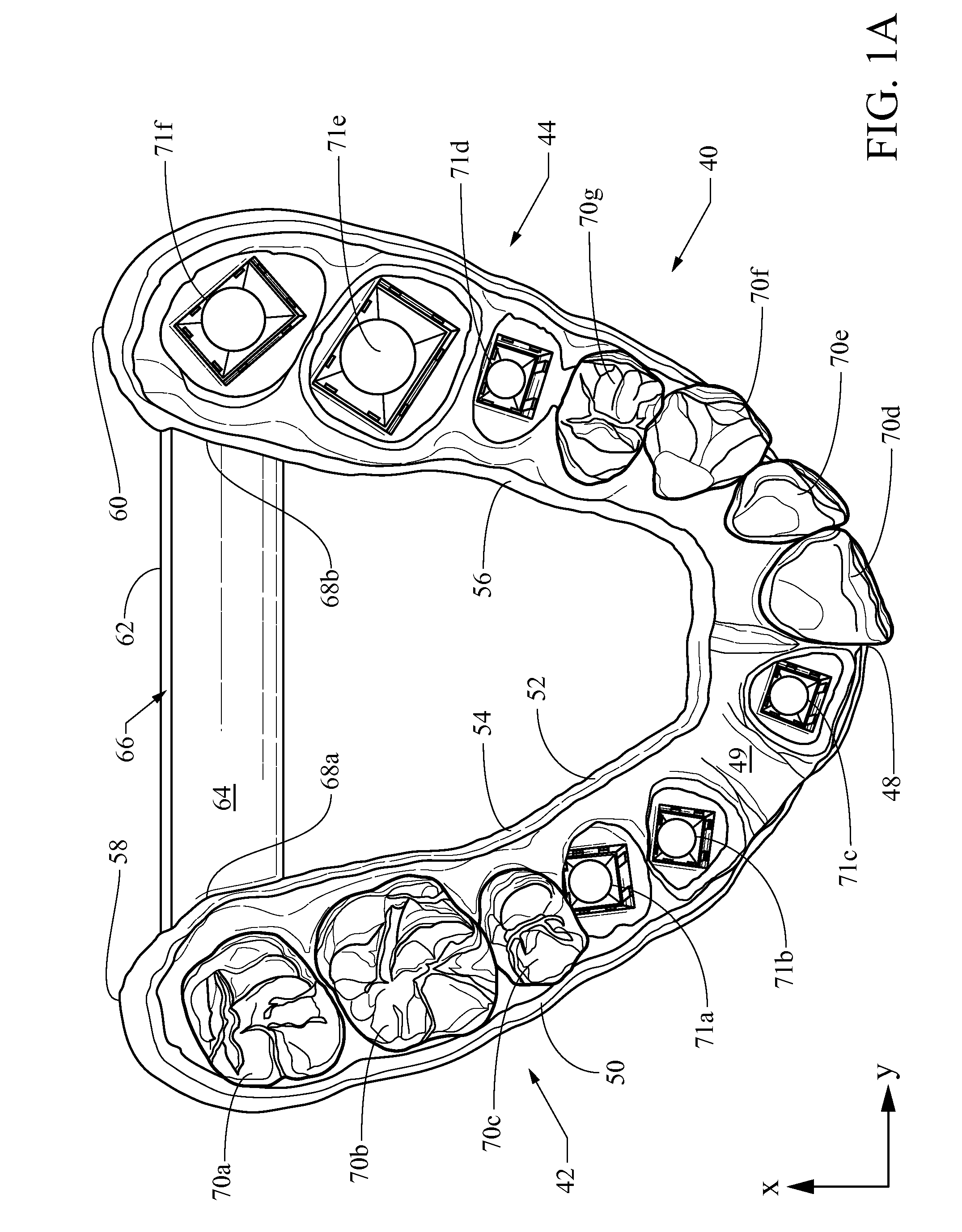Dental arch model and method of making the same
a dental arch and model technology, applied in the field of dental arch models and methods, can solve the problems of undesirable shift, variation in solidification depth and layer thickness, and certain drawbacks of known additive processes
- Summary
- Abstract
- Description
- Claims
- Application Information
AI Technical Summary
Benefits of technology
Problems solved by technology
Method used
Image
Examples
example
[0066]The dental arch model 40 depicted in FIG. 7 is built using an ULTRA three-dimensional printer supplied by Envisiontec, Inc. of Dearborn, Mich. The arch model is constructed using an HTM 140 IV acrylic resin solidifiable material supplied by Envisiontec, Inc. A color compound (Orange Dye 10) is added to the HTM 140 IV resin in an amount of 0.25 g / kg HTM 140 IV. Voxel data representative of the dental arch model 40 is supplied with a maximum voxel thickness of 50 microns. Following post-curing, the dental arch model is measured and compared to the corresponding object data using a magnification of 150×. There is no appreciable deviation in the x-y plane even above the upper-most voxel layer of connector 142. In addition, the measured voxel layer thickness does not deviate appreciably from the 50 micron specification even above the upper-most voxel layer of connector 142.
PUM
| Property | Measurement | Unit |
|---|---|---|
| angles | aaaaa | aaaaa |
| angle | aaaaa | aaaaa |
| viscosity | aaaaa | aaaaa |
Abstract
Description
Claims
Application Information
 Login to View More
Login to View More - R&D
- Intellectual Property
- Life Sciences
- Materials
- Tech Scout
- Unparalleled Data Quality
- Higher Quality Content
- 60% Fewer Hallucinations
Browse by: Latest US Patents, China's latest patents, Technical Efficacy Thesaurus, Application Domain, Technology Topic, Popular Technical Reports.
© 2025 PatSnap. All rights reserved.Legal|Privacy policy|Modern Slavery Act Transparency Statement|Sitemap|About US| Contact US: help@patsnap.com



